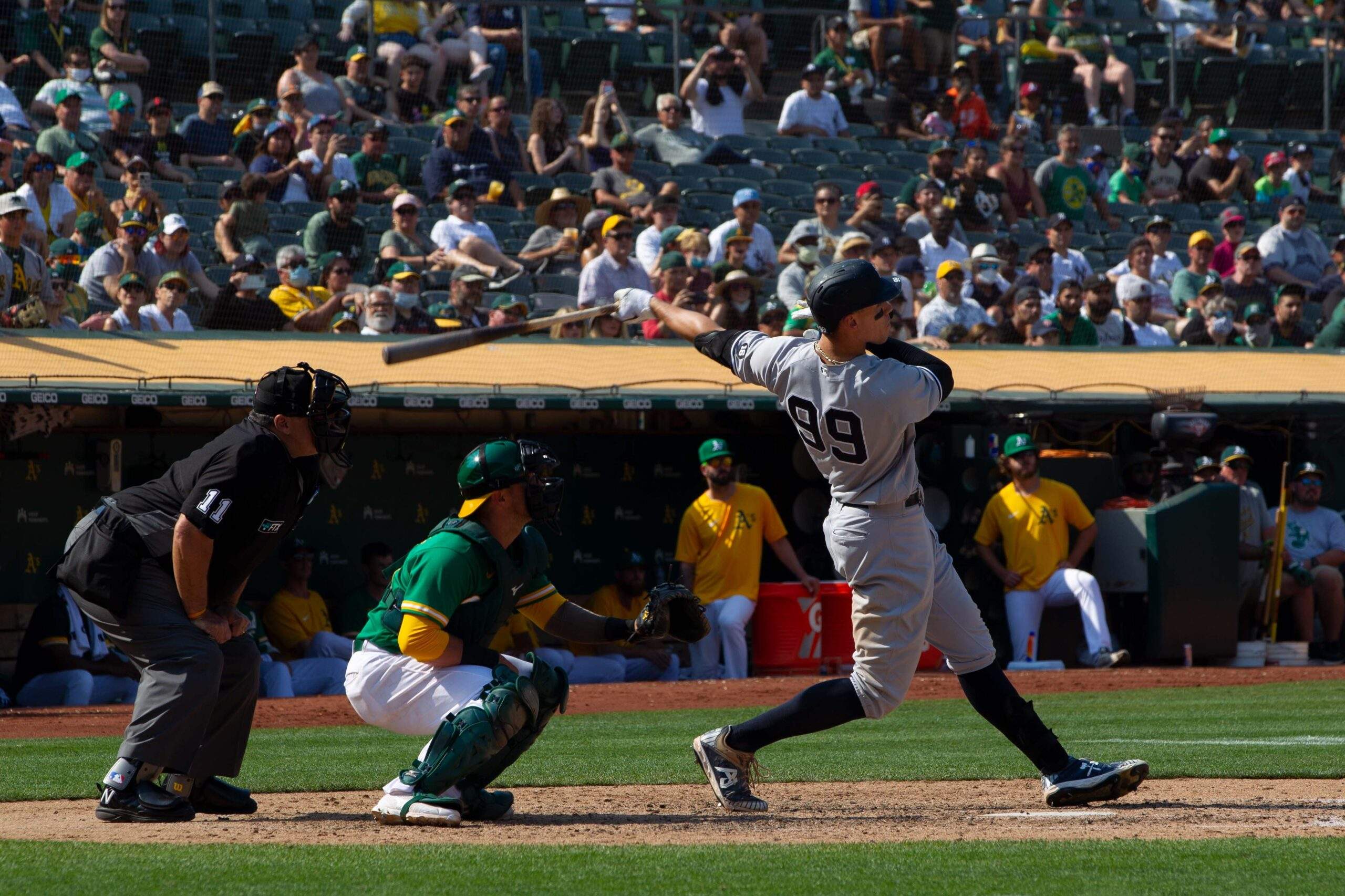Aaron Judge recently became the third Yankee to hit at least 60 home runs in a season — a huge milestone. Babe Ruth was first, in 1927. Roger Maris hit 61 in 1961. (With the season eight games longer, the commissioner ruled Maris needed an asterisk by his name in the record book.)
There’s no controversy with Judge’s achievement. His 60th came in the 147th game of the season.
But Judge is an unlikely home run champion. He’s 6’7” and weighs 282 pounds. Just six other major leaguers out of 20,000 are that big.
Many teams would avoid signing large players because as The New York Times said, “a prevalent belief… is that large players break down faster than their smaller peers.”
Yet here he is, against the odds, in the midst of a great season before he becomes a free agent at the end of the year.
There’s a strange thing about mastery in baseball. A master baseball player looks a lot like a college player, or even a Little League player. They’re making the same motions, doing the same basic things. Masters simply do these things better than anyone else.
Master traders are completely different. Anyone can analyze a stock and make buy or sell decisions. Anyone can mark up a chart with trendlines and moving averages.
Great traders become great because they do things different from everyone else.
They find something nobody else can see, and they exploit it for all it’s worth.
This distinction is called a trader’s edge, and finding yours is imperative to your success. Today, I’ll show you how I found mine, and how you can use the same process to find yours.
How I Found My Edge
If you think you’ll beat the market by trading the 200-day moving average, think again.
Everyone knows about that. And it’s impossible to be a great trader doing what everyone else is doing.
That applies to fundamentals just as much as technicals. Thousands of investors look at price-to-earnings ratios… enterprise value/EBITDA… and every other ratio.
The trades they make on this information are what constitute normal market moves — and usually result in poor returns.
You’ll never have an edge seeing the same thing everyone else sees. I had the benefit of understanding this before I started trading.
Thanks to learning from Mike Carr, I knew early on that market professionals hone their craft over years, if not decades. They spend hundreds of hours learning the basics. Then they spend thousands more going beyond the basics.
I wanted to be among the best. So, I went to work.
I read books. I talked to market professionals. And I stared at charts for much of my waking hours.
That wasn’t enough, though. To trade the market with an edge, I needed to learn how to look at the market in a way nobody else did.
Older pros told me they learned by updating price charts by hand. Every day, they added a price bar to dozens of charts. This helped give them a feel for the market action.
But just because that’s what worked for them, didn’t mean it would work for me.
Instead, I got a feel for the action by looking at technical indicators on charts. I read what the indicator was designed to do. Then I looked at it, bar by bar.
I saw when it worked, and when it didn’t. I quickly learned most indicators don’t really work well.
That’s when it hit me: I needed my own indicator. One that actually did work.
My countless hours staring at charts showed me that down moves were often faster than up moves. If I was going to trade options, which thrive in times of volatility, I should focus my attention on the down moves.
I noticed that before the down move, the close was often near the day’s low. I didn’t know why. But that didn’t matter. What I knew is it happened often enough to turn it into my edge.
I started applying formulas to benefit from that observation. I soon found an indicator that consistently predicted big down moves. The problem was, it was just a line on a chart. Not enough to trade.
To get a signal, I simply added a moving average. Every time the first line crossed the moving average, that told me to trade.
That wound up becoming my trusty volatility indicator. It’s worked so well, I got a Charles Dow Award for it, and still use it to this day.
3 Steps to Trading Greatness
You can boil this process of finding your edge into three simple steps:
- I noticed something about the markets that tracked with how I wanted to trade.
- I developed a system for predicting the moves I was looking for.
- I added a way to produce trading signals from this system.
You can, and should, follow this track as you find our edge.
I’ll share more about my indicator in the future. Because my indicator isn’t the point I want to impart today.
The point today is for you to think about your edge.
Start looking at the markets in the way only you can. Take a break from trading, if you have to. Just dive deeply into what these market movements show you, and how you can exploit them in a wholly unique way.
Once you find an approach that works, you’ve already won. Then, it’s just a matter of implementing it again and again, and watching your account balance grow.
Regards,
